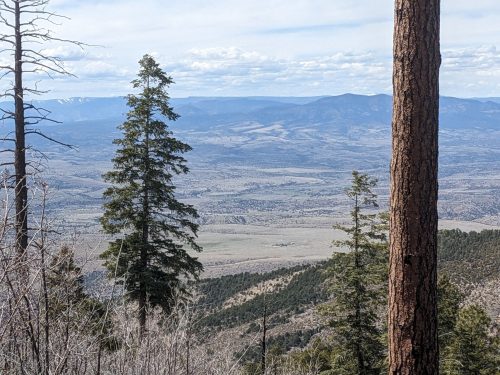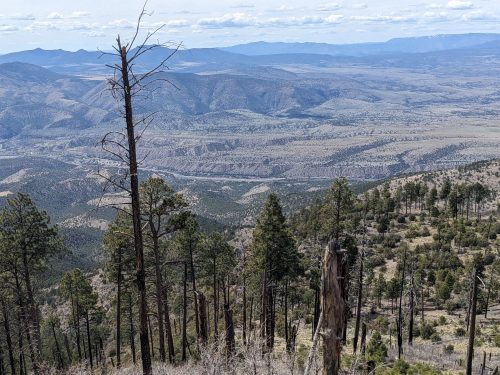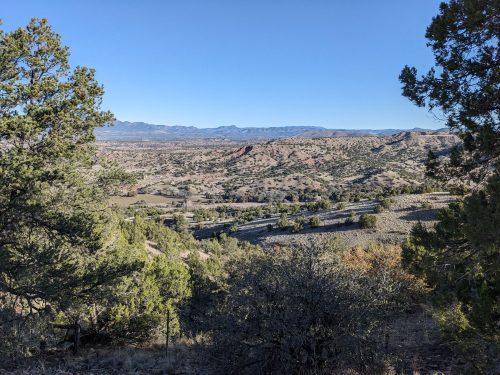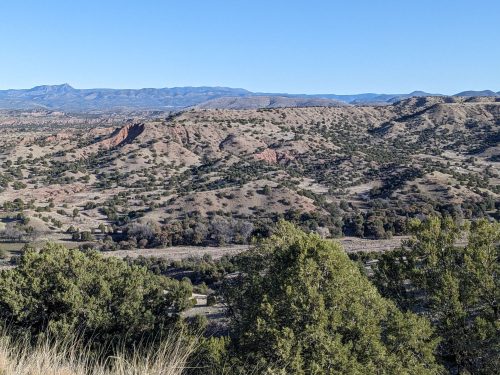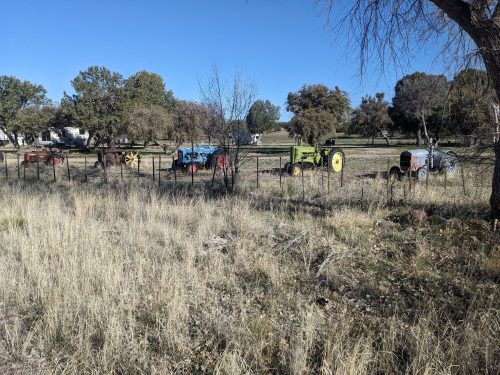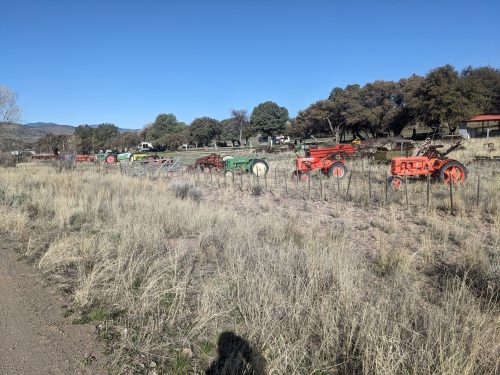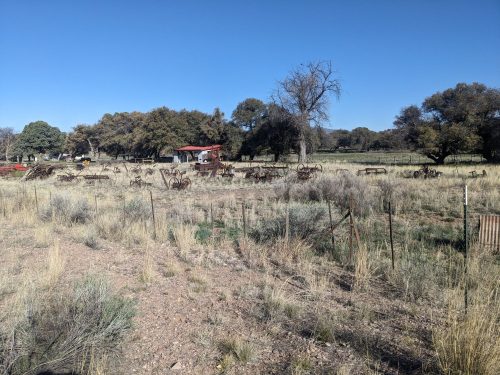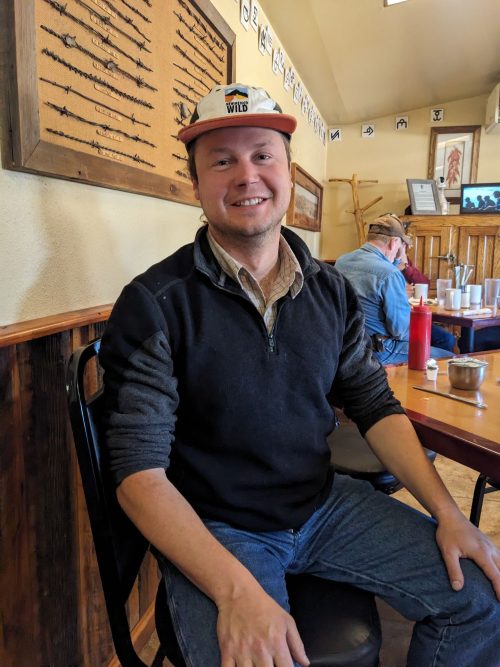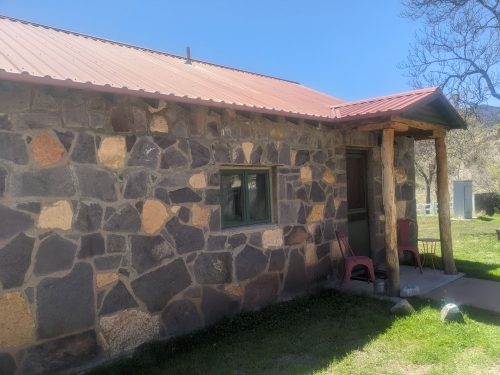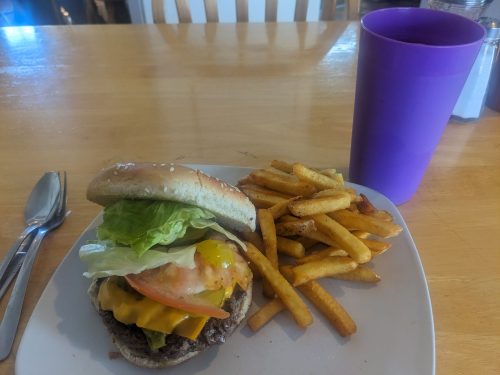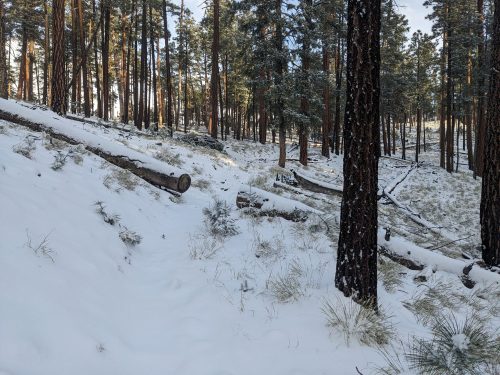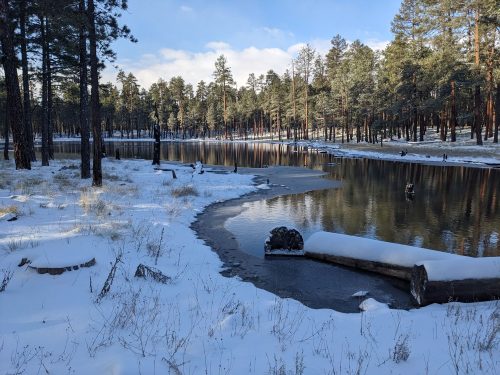- GxL Day 7, April 8, Monday
- Start Glenwood, Los Olmos Cabins
- End Little Whitewater Trail campsite
- Miles walked: 15
Well, I will need to get off the GxL in a few days, once my ride arrives on Wednesday. Until then, I had skipped a few trails getting into Glenwood, and now is a good time to go back and hike them. It looks like my trip this year may be broken into several sections, and my mission has shifted to “ground-truthing” the route, rather than hiking it all in one continuous trip.
East on Catwalk Road, the route crosses Whitewater Creek and then follows Little Whitewater Trail, roughly paralleling Little Whitewater Creek, but mostly much higher.
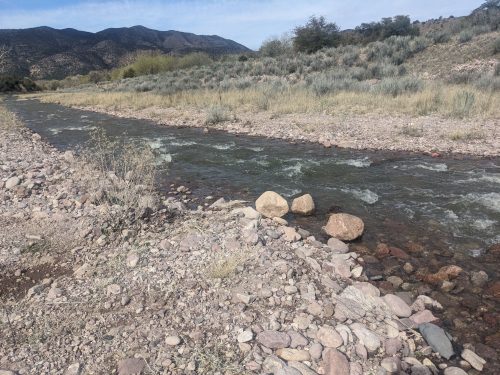
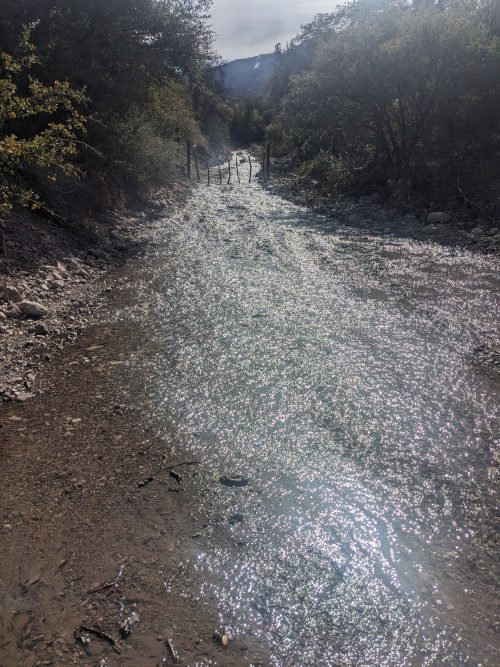
Along a ridge, looking back towards Glenwood, the trail is on the edge of two biomes, with juniper and bushes on the north slope and desert vegetation on the south slope.
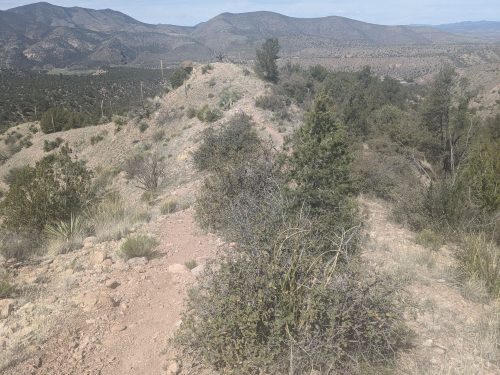
The trail passes a wider flat area on the ridge, marked as a potential campsite for a trail project that I had planned to attend a year or two ago, but got canceled because of high water. Recent signs of trail work are visible, especially lopping.
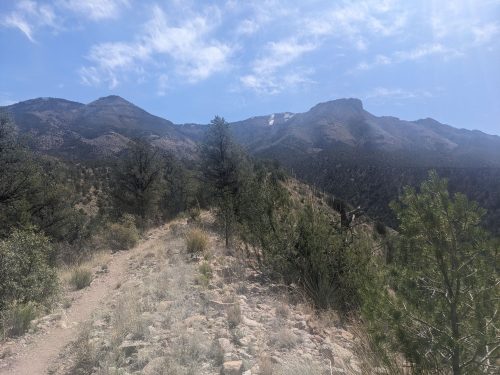
The trail continues to climb towards the peaks, high enough to get to snow.
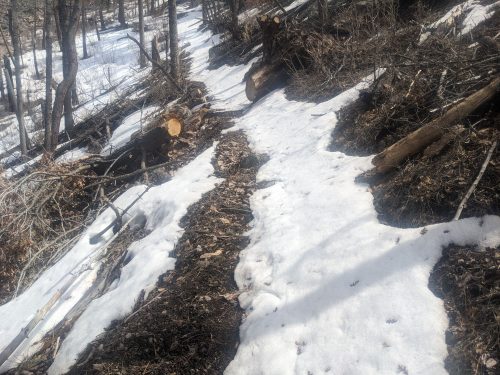
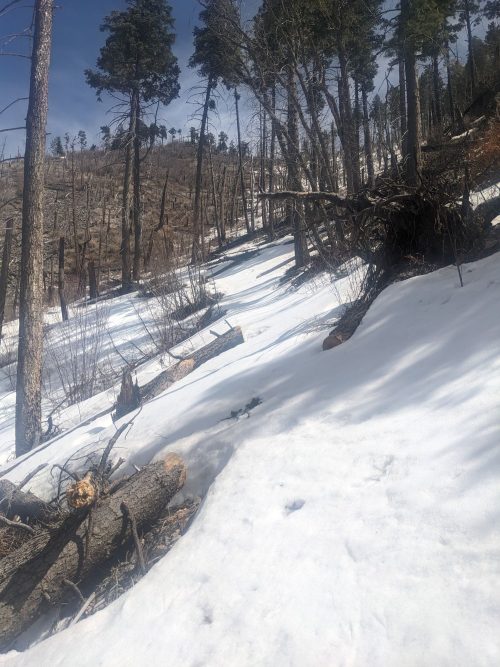
I had hoped to hike beyond Little Whitewater Trail, eventually getting to Holt Apache Trail, but the snow had a steep slide-slope, so I eventually decided to turn around.
The views of Glenwood below show how high we have come.
